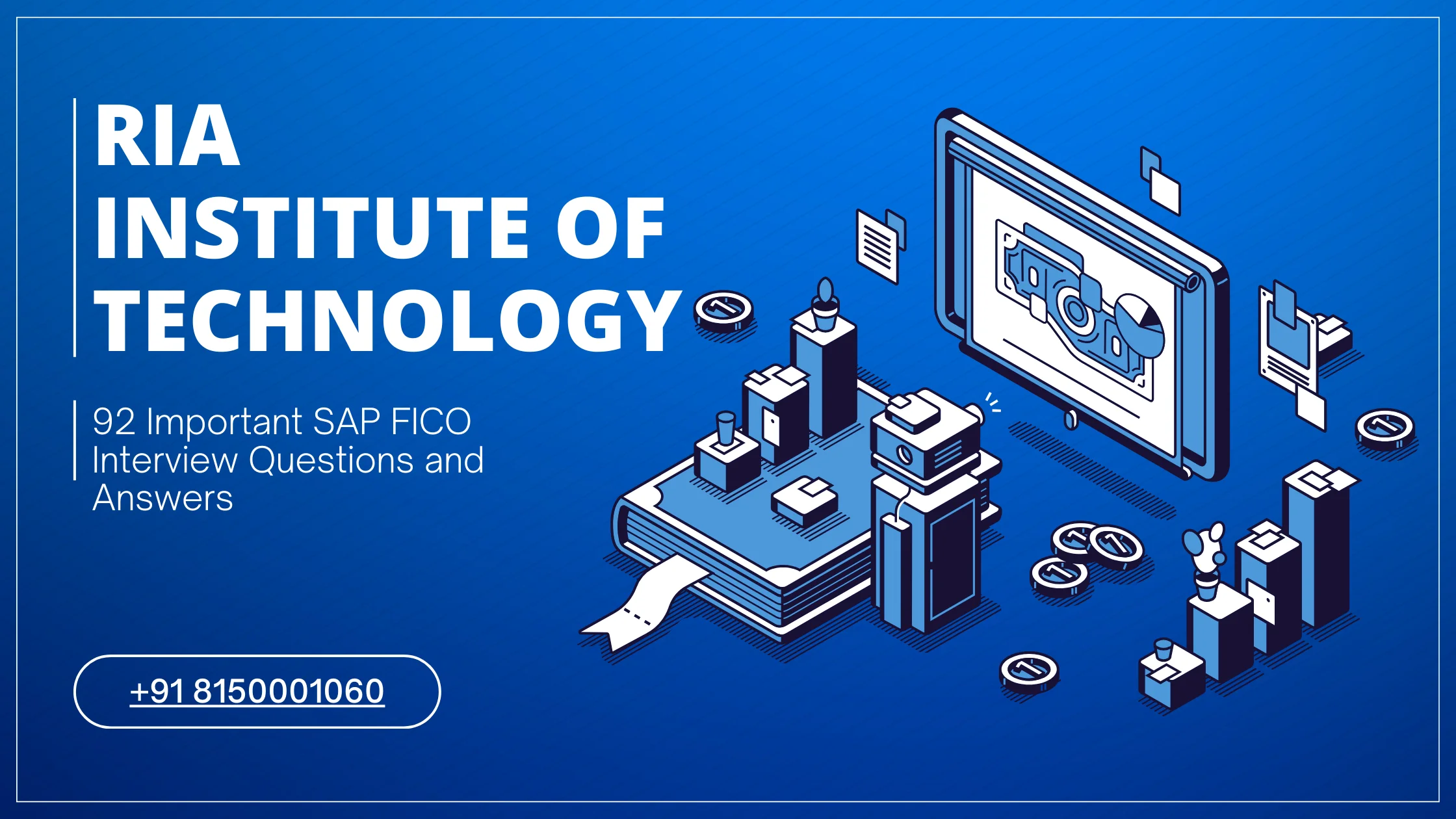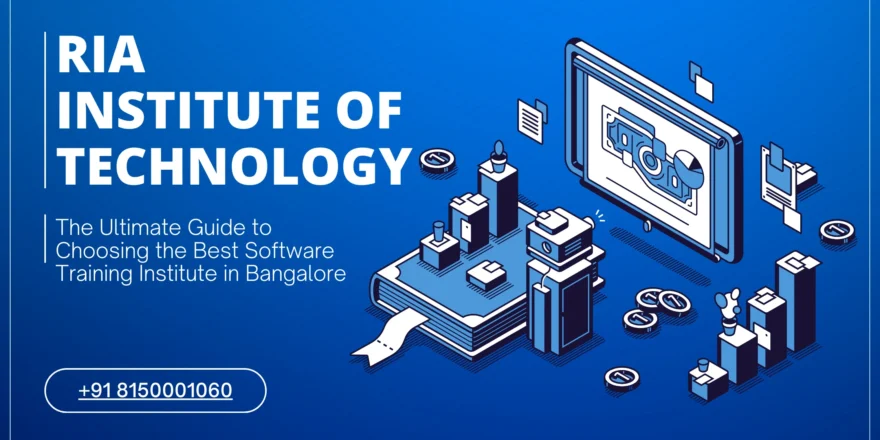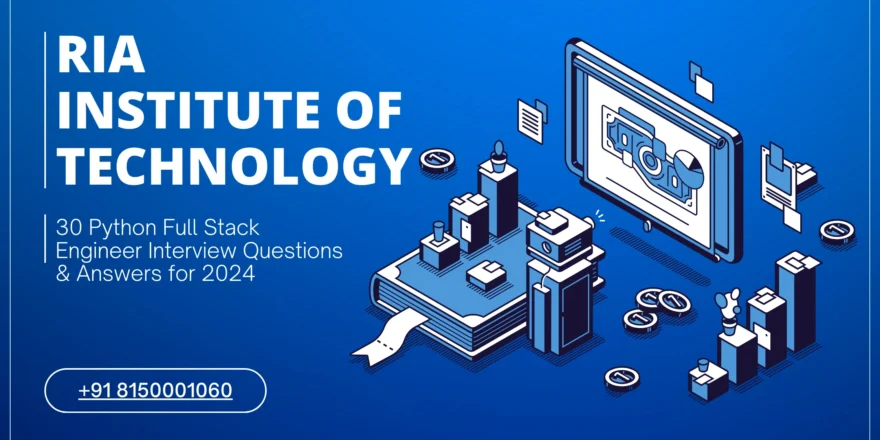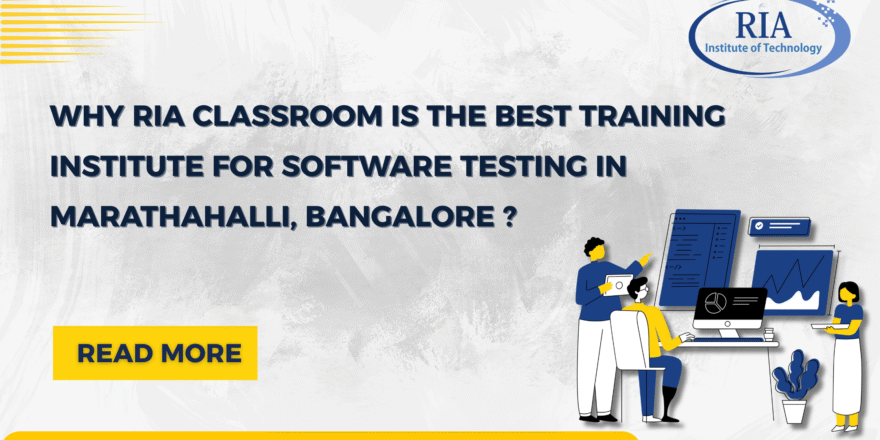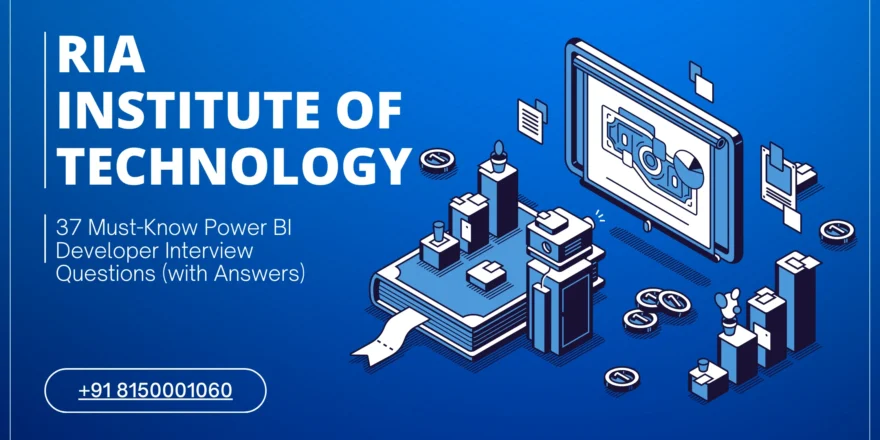Professionals aiming to excel in their professions must have a thorough understanding of SAP Financial Accounting and Controlling (FICO) software and its applications. To help with this, we have developed a list of questions you can ask during a SAP FICO interview. These questions cover a wide range of topics, including SAP FICO fundamentals, configuration and setup, transaction codes, and best practices. This list is a helpful resource for both interviewees and interviewers, ensuring that the interview process is comprehensive and effective in assessing the candidate’s SAP FICO competency.
In this article, we’ll go over 92 key SAP FICO interview questions and answers. We selected the top 92 SAP FICO interview questions and answers from the list. It will assist you in conquering your SAP FICO interview issues.
The SAP FICO interview questions and answers are as follows:
1. What is SAP FICO?
SAP FICO is an acronym for “financial accounting” and “controlling.” SAP FI and SAP CO are key SAP modules that work together to assist businesses in maintaining and creating financial statements for better decision-making and reporting
2. What is the definition of a client?
The SAP Client is the highest-level organisational unit in a SAP system, holding master records and tables.
3. What is the Company Code?
The company code is the smallest external accounting organisational unit for which a fully self-contained set of accounts may be generated. This is a stand-alone legal entity.
4. What is a Controlling Area?
The controlling area is the central organisational unit of the Controlling (CO) component, which is in charge of cost accounting. One or more company codes can be allocated to a single controlling area.
5. What is the Operating Concern?
The Operating Concern is the organisational entity that performs SAP Profitability Analysis. Profitability analysis generates detailed profitability data depending on a variety of factors, including customer, material, and so on.
6. What is the Business Area?
In SAP, a business area is an organisational unit within accounting that can be classified geographically or by product depending on the demands of the enterprise. You prepare financial statements, including a balance sheet and a profit and loss account, for internal reporting within the business sector.
7. What is the Credit Control Area?
A credit controlling Area is an organisational unit or area of responsibility created to regulate client credit limitations. SAP allows for just one credit control area to be assigned to a single company code. However, multiple business codes can be allocated to the same credit control area. Aside from that, the credit-control area might be created from the sales area.
8. What is the Financial Management Area in SAP?
In SAP, a financial management area is an organisational unit that organises the business in terms of cash and money management.
9. What is the default exchange rate type for all SAP transactions?
The default exchange rate for all SAP transactions is M (Average Rate).
10. What is a Segment?
In accounting, a segment is an organisational unit that can be used for both internal and external reports. Profit and loss and balance sheet reporting will be available for each section.
11. What is an Account Group?
An account group is a means of categorising or separating related accounts into a single group. In SAP, each account group is linked to a chart of accounts. Thus, you can only use account groups if the controlling areas share the same chart of accounts.
12. What are Tolerance Groups for Employees?
In SAP, employee tolerance groups set maximum posting restrictions depending on the amount per document, amount per open item account, cash discount, and payment inconsistencies.
13. What is a risk category?
You can divide clients into risk groups, such as low-risk, medium-risk, and high-risk customers.
14. What is a functional area?
A functional area is used to group operating expenses by function, such as production, administration, sales, and R&D. Functional areas can be assigned in both the GL account and cost centre masters.
15. What is the Parallel Ledger Concept?
In New GL, SAP introduced the Parallel Ledger Concept. Parallel accounting can be carried out in General Ledger accounting by running multiple parallel ledgers (general ledgers) for different accounting principles.
Data can be posted to all ledgers, a subset of ledgers (via ledger group), or a single ledger during the posting process. Depending on the requirements, there could be only one leading ledger but several non-leading ledgers. Non-leading ledgers are parallel ledgers that exist alongside the leading ledger.
16. What is a Fiscal Year Variant?
Fiscal Year Variant refers to the Accounting Period for which Financial Reporting is required by law to be disclosed. It is normally a twelve-month period during which a company generates financial statements and conducts frequent inventory inspections.
17. What is a Short End Fiscal Year in SAP?
A short-end fiscal year is when a regular fiscal year is transformed into a non-calendar fiscal year or vice versa. This type of transition occurs when a company joins a new co-corporate organisation.
18. What is the Posting Period Variant?
Posting Period Variants are defined in the Fiscal Year Variant for period start and end dates. You can open and close these posting times as many posting periods as needed, and they can be opened simultaneously.
19. What is a Field Status Variant?
The Field Status Variant must be specified and given to the Company Code. The field status variant uses a variety of field status groups to declare the field requirement (mandatory, optional, or concealed) for each GL account at the time of posting. Individual G/L accounts are assigned field status groups in the master record.
20 What is Document Type?
The document type is used to record different types of transactions in the system. Document types apply to all clients. For each document type, we specify a number range key.
Examples include AA-Asset Posting, AF-Depreciation Posting, DZ-Customer Payment, KZ-Vendor Payment, and SA-G/L Account Document.
21. How many currencies can be set up for a Company Code?
A company code can be set to utilise one of three currencies: one local and two parallel currencies.
22. What is the local currency?
The currency entered during the company code creation process is known as local currency.
23. What is parallel currency?
The currency entered during the company code creation procedure is referred to as the local currency, and the other two additional currencies are referred to as parallel currencies.
24. What is the role of Parallel Currency in SAP?
In foreign business transactions, parallel currencies may be employed. Parallel money can be used to facilitate international transactions.
25. What is the Posting Key?
A posting key is a two-digit numerical value used to determine the transaction type placed into the line item.
26. What Are SAP Validations and Substitutions?
Validation or substitution is defined at the document and line item level for each SAP functional area, such as Assets and Controlling.
27. What is a chart of accounts?
A chart of accounts is a list of all GL accounts that can be utilised in an accounting system based on a single accounting principle. Every accounting principle necessitates the development of a new chart of accounts.
28. What is SAP’s Financial Statement Version (FSV)?
The Financial Statement Version (FSV) is a hierarchical organisation of general ledger accounts. The accounts can be set up in compliance with the legal requirements utilised to compile your financial statements. Alternatively, you can organise the accounts based on your needs.
29. What are SAP’s Sales and Purchase Taxes?
Purchase Tax (Input Tax) is levied on all forms of purchases, whereas Sales Tax (Output Tax) is applied to all types of sales. Each country has its own sales and purchase tax system.
30. What are recurring entries?
Recurring Documents are used to manage transactions that are routine and repetitive.
31. What are Accrual and Deferral Entries?
Accrual or deferral entries are useful for noting provisions. Provisions can be created at the end of the month and reversed the next month by running a SAP programme. This function is important for publishing accruals, deferrals, and provisional entries at the end of each month.
32. What is the Vendor Account Group?
A Vendor group is an object designed to distinguish between different sorts of Vendors and transactionally group Vendors of similar nature.
33. What is a Vendor Reconciliation Account?
Each vendor is given to a general ledger account called the vendor reconciliation Account. Vendor balances are automatically reconciled to the vendor reconciliation account balance.
34. What are the Payment Terms?
A Payment Term defines the conditions under which a payment must be paid. It represents the normal agreements you make with your vendors and customers. When a vendor’s or customer’s Master Record is generated, they are assigned a payment term.
35. What is the Security Money Deduction from the Bill?
Security funds are deducted from the Bill during the payment procedure. In this method, a portion of the final payment to the vendor is withdrawn as a security deposit and reimbursed after a set length of time, depending on the business terms and circumstances. This will be recorded as a distinct GL liability owing to the vendor.
36. What is the Customer Account Group?
A customer group is an object designed to distinguish between different sorts of customers and combine consumers with similar transaction patterns.
37. What is a Customer Reconciliation Account (CRA)?
A customer reconciliation account is a general ledger account that is permanently reconciled in SAP to the customer balance. When a financial posting is made to a customer account, it is automatically duplicated in the customer’s reconciliation account in the general ledger. Customer reconciliation accounts can only be posted through the customer channel; they cannot be submitted directly to the general ledger.
39. What is the Special GL Indicator?
Special GL indications are utilised in transactions other than ordinary accounts receivable and payable transactions to identify a special GL transaction.
40. What is “Day Sales Outstanding” (DSO)?
Days Sales Outstanding is the average number of days it takes for a customer to pay a receivable or the company’s average collection period. The number of days’ sales outstanding (DSO) is used to evaluate the efficiency of receivable management.
41. What is Dunning in SAP?
Dunning is the process of sending payment-chasing letters to customers. The dunning level on the customer master allows us to determine which letter was issued to the client.
42. What is the Chart of Depreciation Accounts?
A depreciation chart is used to manage asset valuation for various legal purposes. Every Company Code that employs Asset Accounting must be allocated to a depreciation chart.
43. What is the Depreciation Area?
The depreciation area helps to value asset balances and transactions for a variety of objectives. It records and depreciates values in the general ledger.
44. What is Asset Class?
Fixed assets are divided into asset classes (such as vehicles, furniture, and machines). Asset classes are used to classify fixed assets according to business and legal requirements. The asset class is separated into two sections: master data and depreciation area.
45. What is the Depreciation Key?
The depreciation key (valuation key) determines the asset’s value in certain depreciation sectors.
46. What is Account Determination?
Account determinations are SAP keys that link asset classes or master records to general ledger (G/L) accounts based on transaction type.
47. What is a Financial Lease Asset?
Financial lease asset periods are the same as company-owned assets, with a purchase cost and typical depreciation. Leased assets will be formed as a separate asset class, allowing lease-related data to be kept.
48. What is an Operating Lease Asset?
Operating lease assets do not appear on the balance sheet. As a result, for reporting and tracking purposes, a zero-value asset will be created in the relevant asset class, and an evaluation group key will be recorded in the Evaluation Group 1 field on the asset master’s Allocations page.
49. What is a Cash Journal?
Bank Accounting includes the Cash Journal as a submodule. It is used by businesses to handle their cash and petty cash transactions. The system calculates and displays the opening and closing balances, as well as the receipt and payment totals, automatically. A single company code can be used to produce many cash journals.
50. What is a bank key?
Each bank branch needs its unique bank key (account number). This comprises the bank’s name, address, swift code, branch code, and taxpayer identification number.
51. What is Automatic Payment in SAP?
Automatic payment is a system that allows SAP to automate payments to vendors and consumers based on a due date calculated using payment terms and the baseline date.
52. At what level does SAP store the customer and vendor codes?
SAP saves vendor and customer codes at the client level. That is, by expanding the company code view, every company code can access the customer and vendor codes.
53. What is a GRIR Clearing Account in SAP?
In SAP, the GR IR Clearing Account serves as an intermediary for items and invoices in transit. It represents the accounts of Goods Receipt and Invoice Receipt. This is a balance sheet account.
54. What is SAP’s Controlling Module?
SAP’s controlling module gives management the information it needs to make choices. It allows the organisation’s various processes to be coordinated, monitored, and optimised.
55. What is the relationship between FI and CO?
In the SAP system, Controlling (CO) and Financial Accounting (FI) are two distinct components. The appropriate FI accounts are managed as cost/revenue items in CO. The user must assign a cost object, such as cost centres, projects or orders, COPA segments, and so on, to the costs and revenues recorded in FI. The cost element and cost object combine to cause the item to flow from FI to CO. The data flow between the two components happens in real time.
56. What is a Profit Centre?
A profit centre is an accounting organisational unit that frequently mirrors the organisation’s management-oriented structure for internal control. A profit centre is where revenue and expenses are recorded.
57. What is a Cost Centre?
A cost centre is an organisational entity in the Controlling Area that does not create direct profit but collects business-related expenses.
58. What constitutes an internal order?
An internal order is a cost object in which we record our costs for a specific time period. An Internal Order is a highly useful CO tool that may be used to track expenditures and, in some cases, revenues inside a specified area.
59. What are the different types of internal orders?
There are two types of internal orders, as follows:
- Real Internal Order
- Statistical Internal Order (66)
60. What is Real Internal Order?
Real internal orders are cost objects that can collect expenses and then be assigned to other objects such as cost centres, fixed assets, and so on.
61. What is the main purpose of real internal order?
Real internal orders will be used largely for asset transactions.
62. What is the statistical internal order?
Statistical internal orders are statistical objects that do not record expenses. They are simply used to report information.
63. What is Cost Element Accounting?
SAP Cost Elements are cost modes or carriers. Cost Element Accounting manages cost elements, which control master data objects. It is the portion of accounting where expenses made during a settlement period are recorded and organised. It is not an accounting system but rather a meticulous record of data that serves as the foundation for cost accounting.
64. What is Product Cost Control?
Product Cost Controlling is a Controlling component that manages product costs and associated activities. It is an important component of standard costing, which involves predicting standard costs based on raw material prices, production activities, and overheads, as well as tracking and regulating cost flows that occur within the manufacturing process.
65. What is Controlled Profitability Analysis (CO-PA)?
Controlling Profitability Analysis (CO-PA) is a Controlling component that enables businesses to evaluate and analyse the profitability of market segments based on products, customers, orders, and business units (sales organisations) in relation to the company’s profit margin.
66. What are the two types of COPA analyses?
There are two types of COPA analyses:
There are two types of COPAs: cost-based and account-based.
67. What is Cost-Based Profitability Analysis?
Costing-based profitability analysis allows for a far better breakdown of costs and revenues than the GL account level. This is not automatically reconciled with the general ledger.
68. What is Account-Based Profitability Analysis?
Account-based Profitability Analysis is a sort of profitability analysis that is organised by account and employs an account-based valuation technique. This kind distinguishes itself by incorporating cost and revenue variables. It offers profitability reports that are reconciled with financial statements.
69. What is the Value Field in COPA?
In the profitability analysis, value fields are numerical or value-related fields such as quantity, sales revenue, discount value, and so on.
70. What are the Primary Cost Elements?
Primary Cost Elements are those cost elements whose expenses originate outside of the CO module, including accrual costs used for control. In financial accounting, each primary cost element will have a corresponding G/L account.
71. What are the secondary cost elements?
Secondary cost elements are cost components used to allocate costs for internal operations. Secondary cost elements in financial accounting do not have a matching profit and loss account. They are only utilised for controlling and hence cannot be classified as a general ledger account in financial accounting.
72. What Are Some Applications of Secondary Cost Elements?
Some applications of secondary cost factors are as follows:
Product costing activity allocation: COPA allocation (79). What is the Cost Centre Standard Hierarchy?
A cost centre. The Standard Hierarchy is a hierarchical structure of all cost centres within the controlling region. A Cost Centre Standard Hierarchy is a collection of cost centre groups arranged one below the other, as well as groups that have been transferred to higher-level groups, all of which are part of the standard hierarchy.
73. What is the Bill of Materials (BOM)?
A bill of materials (BOM) is a formally structured list of the components used in the production of a finished or semi-finished product. The list covers each component’s material number, amount, and unit of measurement.
74. What is Routing?
Routings define the operations used to create the final product. Routing includes the work centres and common activities employed in the material’s production.
75. What is Activity Type?
Activity type is a Controlling component that classifies activities conducted inside a cost centre. In other words, activity kinds represent the cost center’s output. Activity kinds include setup time, machine time, and labour time, among others.
76. What is a maintenance order?
A maintenance order, like an internal order, is a cost item that provides additional capabilities for Plant Maintenance. It saves plant maintenance charges for further processing in the Controlling module.
77. What is a Production Order/Product Cost Collector?
A production order, also known as a product cost collector, is a cost object that, like an internal order, provides additional features required for Production Planning. It tracks production costs for further processing in the Controlling module.
78. What is the Statistical Key Figure?
Statistical key numbers provide non-monetary facts for profit centres, such as the number of employees, machines, capacity utilisation, market information, and so on.
79. What is the Profitability Segment?
The profitability segment is a Profitability Analysis item that represents costs and revenues.
80. What are the characteristics?
Characteristics are criteria in Profitability Analysis (CO-PA) that can be used to assess operating performance.
81. What is the Standard Cost Estimate?
Standard cost estimation is the process of determining the expected standard cost of an in-house manufactured product. It calculates the finished product’s production cost by factoring in predicted raw material costs and conversion expenditures. It is a component of the SAP Product Costing module.
82. What is a Mixed Cost Estimate?
Multiple costing can be used when inventory value has to include multiple procurement costs for the same material, such as two production lines or two vendors.
83. What is Actual Costing or Material Ledger?
true costing, often known as Material Ledger, is a SAP function that calculates a product’s true periodic cost. Inventory can be revalued (using real cost computation), and associated accounting entries can be generated as an option.
84. What is the Costing Variant?
The costing variant explains how a cost estimate generates the standard price.
85. What is the Cost Component Structure?
Cost Component Structure is a means of representing a product’s cost in a simple and comprehensible way that is used for a variety of decision-making purposes. Cost component views control how product cost estimates are displayed. Each cost component may be variable or fixed in nature.
86. What is the Standard Cost Estimate Release?
Cost estimate release is the process of calculating the production cost of a manufactured item and publishing it as a standard price.
87. What are the prerequisites for a standard cost estimate?
A costing variant can be used to calculate a standard cost estimate. The costing version has the following settings for standard cost estimates:
The costing type indicates that the costing results can be changed to the standard price in the material master.
The valuation variation indicates that materials are valued at the regular price. The BOM Application requires costing to be released.
88. How Do I Calculate the Joint Product or Co-Product Cost in SAP?
The cost of the joint product will be computed using a standard cost estimate throughout the costing run (T-Code CK40N). Furthermore, an apportionment structure must be built in the material master of the two joint products to determine how the production costs will be split between the two co-products during the standard cost estimate.
89. How Do I Calculate the Cost of the Byproduct?
The byproduct is likewise mentioned as a negative component of the primary product’s BOM (output). However, the cost of the byproduct is unrelated to the cost of the primary product. It is typically set at a standard price that represents either the projected cost of production or the market value, whichever is lower.
90. What are Normal and Abnormal Losses in SAP?
In a production process, normal loss is the difference between input and output materials. This is the average loss observed over time and is already calculated in the BOM.
The loss that is unique to a specific production batch is known as anomalous loss. It is in addition to regular loss and is not factored into the conventional BOM.
91. What is SAP’s Production Variance?
Production variation is the difference between the net actual costs charged to the order and the targeted costs based on the initial cost estimate and inventory level.
92. What is the pricing difference in SAP?
Price discrepancies exist for materials valued at the standard price in all movements and invoices with a value other than the standard price.
At the end of this post, I hope you have a better knowledge of the SAP FICO interview questions and answers.
If you read these 92 key SAP FICO interview questions and answers on a regular basis, you will certainly increase your comprehension of FICO words and explanations, helping you to do well in your interview.

